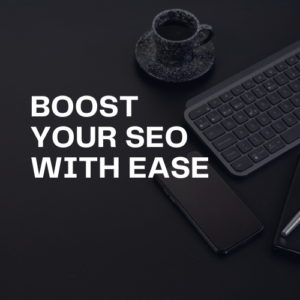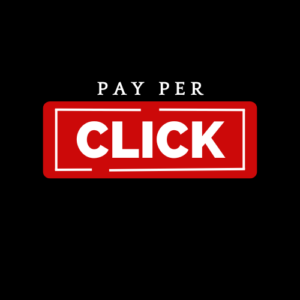DIGIZONN
(GROWS YOUR BUSINESS)
WELCOME TO DIGIZONN
We provide best digital marketing services in Delhi. Our services is to help businesses to grow their digital presence, reach potential customers, increase brand awareness and increase revenue through digital channels. our agency employ a range of digital tools and strategies to execute marketing campaigns.
OUR SERVICES

WEB DESIGN
WEB DESIGN

SEO
SEO

GOOGLE ADS
GOOGLE ADS

SMM
SMM
FEATURED PRODUCTS
-
Uncategorized
WOMEN’S PARTY WEAR
Rated 0 out of 5$2,300.00Original price was: $2,300.00.$2,099.00Current price is: $2,099.00. Add to cart -
Uncategorized
WOMEN’S CASUAL WEAR
Rated 0 out of 5$1,200.00Original price was: $1,200.00.$999.00Current price is: $999.00. Add to cart -
Uncategorized
WOMEN’S WINTER JACKET
Rated 0 out of 5$2,200.00Original price was: $2,200.00.$1,899.00Current price is: $1,899.00. Add to cart -
Uncategorized
MEN’S CASUAL WEAR
Rated 0 out of 5$1,500.00Original price was: $1,500.00.$1,199.00Current price is: $1,199.00. Add to cart -
Uncategorized
MEN’S PARTY WEAR
Rated 0 out of 5$2,500.00Original price was: $2,500.00.$1,999.00Current price is: $1,999.00. Add to cart -
Uncategorized
MEN’S LEATHER JACKET
Rated 0 out of 5$2,000.00Original price was: $2,000.00.$1,699.00Current price is: $1,699.00. Add to cart
GROW YOUR BUSINESS WITH US
We will help your business to grow all across the world and will reach you and your business to the top of its peak. will help you in advertising with google ads.
WEB DESIGN
Web design is the process of planning, conceptualizing, and arranging content on a website. It involves various aspects such as layout, color schemes, typography, navigation, and user experience (UX). Web design is crucial because it directly impacts the way users interact with a website, influencing its usability and aesthetic appeal.
Here are the key components of web design:
1. Layout
- Grid Systems: Organizing content into columns or rows helps maintain consistency and order. Common grid layouts include a 12-column grid.
- Responsive Design: Ensures the website looks good on all devices (desktop, tablet, mobile). This is achieved using flexible grids, images, and media queries.
- Whitespace (or Negative Space): This refers to the empty space between elements, helping the design feel clean and easy to read.
2. Color Schemes
- Colors influence mood and user behavior. Choosing a color palette that complements the brand is vital for aesthetic appeal.
- Contrast: Sufficient contrast between background and text improves readability.
- Color Psychology: Certain colors evoke specific emotions, e.g., blue for trust, red for energy.
3. Typography
- Fonts: Choosing appropriate fonts is key to readability and aesthetics. Web-safe fonts, such as Arial, Times New Roman, or Google Fonts, are commonly used.
- Hierarchy: Using different font sizes, weights, and styles to guide the user through content.
SEO
SEO (Search Engine Optimization) is the practice of optimizing a website to improve its visibility and ranking on search engines like Google, Bing, and Yahoo. The higher a website ranks on search engine results pages (SERPs), the more likely it is to receive organic (non-paid) traffic. SEO is essential for businesses, bloggers, and anyone seeking to increase their online presence.
Key Components of SEO:
On-Page SEO: On-page SEO refers to all the elements that can be optimized directly within a webpage to improve its ranking.
- Title Tag: The title of your page that appears on the search results and browser tab. It should be clear, concise, and include your primary keyword.
- Meta Description: A brief description of the page content that appears under the title in search results. It should be engaging and encourage clicks.
- Headings (H1, H2, H3…): Proper use of header tags helps search engines understand the structure of your content. The H1 tag should be used for the main title, while H2 and H3 tags are used for subheadings.
- URL Structure: Clean, descriptive URLs (e.g.,
www.example.com/seo-tips) are better for SEO and user experience. - Keyword Optimization: Use relevant keywords naturally throughout the content. Avoid keyword stuffing, and focus on user intent.
- Internal Linking: Linking to other relevant pages on your website helps search engines understand the structure of your site and encourages visitors to explore more content.
- Alt Text for Images: Describe your images with keyword-rich alt text to improve accessibility and allow search engines to index them.
Off-Page SEO: Off-page SEO involves strategies outside your website that affect your ranking, primarily focusing on building authority and credibility.
- Backlinks: Links from other websites to your own are one of the most important ranking factors. High-quality, authoritative backlinks signal to search engines that your site is trustworthy and relevant.
- Social Signals: Social media activity, such as shares and likes, can indirectly affect SEO by driving traffic to your site and increasing brand awareness.
- Guest Blogging: Writing articles on other websites and including a link back to your own can help improve your domain authority.
- Online Reviews: Positive reviews on platforms like Google My Business, Yelp, or industry-specific sites can boost your credibility and visibility.
Technical SEO: Technical SEO refers to the backend optimizations that help search engines crawl and index your website more effectively.
- Mobile-Friendliness: With most searches happening on mobile devices, Google prioritizes mobile-friendly websites in its rankings.
- Site Speed: Fast-loading websites are crucial for both user experience and SEO. Slow sites can increase bounce rates and decrease rankings.
- XML Sitemap: An XML sitemap helps search engines understand the structure of your site and find all important pages.
- HTTPS: Secure websites (those with SSL certificates) are favored by search engines. If your website isn’t using HTTPS, it’s a good idea to implement it.
- Canonical Tags: These tell search engines which version of a page is the “master” version, preventing issues like duplicate content.
GOOGLE ADS
Google Ads is an online advertising platform developed by Google, allowing businesses to create ads that appear on Google’s search engine results pages (SERPs), YouTube, and various other websites across the Google Display Network (GDN). Google Ads operates on a pay-per-click (PPC) model, where advertisers pay each time a user clicks on their ad. It’s a powerful tool for driving targeted traffic to websites, increasing brand visibility, and boosting sales.
Types of Google Ads Campaigns
Search Ads:
These ads appear at the top or bottom of Google search results when users type in relevant keywords.
Example: If someone searches for “best running shoes,” an ad for a running shoe store might appear.
Search ads target users actively searching for specific products or services, making them highly effective for capturing demand.
Display Ads:
These are visual ads (banners, images, videos) that appear on websites within the Google Display Network (GDN).
These ads can be shown on blogs, news sites, YouTube, and more, helping businesses reach a broader audience.
Example: If you sell sports equipment, your ad may appear on fitness-related websites or YouTube videos.
Video Ads:
These ads appear on YouTube or other Google partner sites and can be skippable or non-skippable.
Example: A video ad showcasing a new product might appear before a user’s video on YouTube.
Video ads can help in building brand awareness or explaining a product in an engaging format.
SMM
SMM (Social Media Marketing) is the process of using social media platforms to promote products, services, or brands, with the goal of increasing engagement, building brand awareness, and driving website traffic or sales. Social media marketing leverages various platforms like Facebook, Instagram, Twitter, LinkedIn, TikTok, Pinterest, and others to connect with an audience and achieve marketing goals.
Key Aspects of SMM (Social Media Marketing):
1. Platform Selection
- Different social media platforms attract different types of users and have varied features, so selecting the right platform for your target audience is essential.
- Facebook: Great for all types of businesses, especially those with a broad target audience.
- Instagram: Ideal for brands that rely on visual content (fashion, beauty, lifestyle).
- Twitter: Best for real-time updates, news, customer service, and engagement.
- LinkedIn: Effective for B2B marketing, professional networking, and thought leadership.
- TikTok: A newer platform popular with younger audiences, ideal for creative, short-form video content.
- Pinterest: A visual search engine that’s perfect for businesses in design, home decor, and lifestyle niches.
- YouTube: Great for video content like tutorials, product demos, or entertainment.
2. Content Creation
- The type of content you create is crucial for engaging your audience. Content can vary from text posts to images, videos, polls, infographics, and live streams.
- Images and Graphics: Use high-quality images or graphics that reflect your brand’s aesthetic and message.
- Videos: Video content often performs better in terms of engagement. It could be anything from product demos to behind-the-scenes content.
- Stories and Live Streams: Platforms like Instagram, Facebook, and YouTube have stories or live stream options to interact with your audience in real-time.
- User-Generated Content: Encourage your customers or followers to create content (photos, reviews, etc.) related to your brand.
- Infographics: Infographics are great for presenting complex information in a visually digestible way.
- Memes and GIFs: In some cases, memes or GIFs can help make your brand more relatable and humanize it, though it depends on your industry.
3. Audience Engagement
- Engaging with your audience is one of the most important aspects of social media marketing.
- Respond to Comments and Messages: Show your audience that you value their engagement by responding to questions, comments, and messages promptly.
- Polls and Surveys: Use polls, surveys, and quizzes to engage your followers while gathering valuable feedback.
- Hashtags: Hashtags help increase the reach of your posts by making them discoverable to a wider audience beyond just your followers.
- User-Generated Content (UGC): Encourage users to create and share content related to your brand, products, or services.
- Influencer Marketing: Partnering with influencers in your niche can help you reach a larger, more targeted audience.
DIGITAL MARKETING SERVICES FAQ'S
What is digital marketing?
Digital marketing refers to the use of digital channels, such as search engines, social media, email, and websites, to promote and advertise products or services. It encompasses various strategies like SEO, content marketing, social media marketing, PPC (pay-per-click), email campaigns, and more to engage with consumers and drive sales.
Why is digital marketing important for businesses?
Digital marketing is crucial because it allows businesses to reach a wide audience at a lower cost compared to traditional marketing methods. It provides measurable results, real-time feedback, and the ability to target specific demographics, ensuring a more effective and personalized marketing strategy.
What are the main components of digital marketing?
The key components of digital marketing include:
- Search Engine Optimization (SEO): Improving a website’s ranking on search engines like Google.
- Content Marketing: Creating and distributing valuable content to attract and engage an audience.
- Social Media Marketing: Using platforms like Facebook, Instagram, and LinkedIn to connect with customers.
- Email Marketing: Sending targeted emails to nurture leads and retain customers.
- Pay-Per-Click Advertising (PPC): Running ads on search engines or social media, where businesses pay per click.
How do I measure the success of digital marketing efforts?
Success can be measured using various metrics, depending on the specific goals of the campaign. Common metrics include:
- Website traffic: Number of visitors and where they come from.
- Conversion rate: The percentage of visitors who take a desired action (e.g., making a purchase).
- Engagement rates: Likes, shares, and comments on social media.
- Return on Investment (ROI): The profitability of the campaign.
- Click-through rate (CTR): The ratio of users who click on a link compared to those who view it.
BASIC
SINGLE PAGE WEBSITE-
1 PAGE WEBSITE
-
1 FLASH ANIMATION
-
WP ADMIN ACESS
-
WOOCOMMERCE FUNTIONALITY
-
DOMAIN
-
HOSTING
-
2 PROFESSIONAL EMAILS
INTERMEDIATE
UPTO 5 PAGES-
1 PAGE WEBSITE
-
1 FLASH ANIMATION
-
WP ADMIN ACESS
-
WOOCOMMERCE FUNTIONALITY
-
DOMAIN
-
HOSTING
-
2 PROFESSIONAL EMAILS
ADVANCE
UPTO 10 PAGES-
1 PAGE WEBSITE
-
1 FLASH ANIMATION
-
WP ADMIN ACESS
-
WOOCOMMERCE FUNTIONALITY
-
DOMAIN
-
HOSTING
-
2 PROFESSIONAL EMAILS
Our Address
Abul Fazal enclave, Jamia Nagar , Okhla- Delhi 110025

Find us on map







